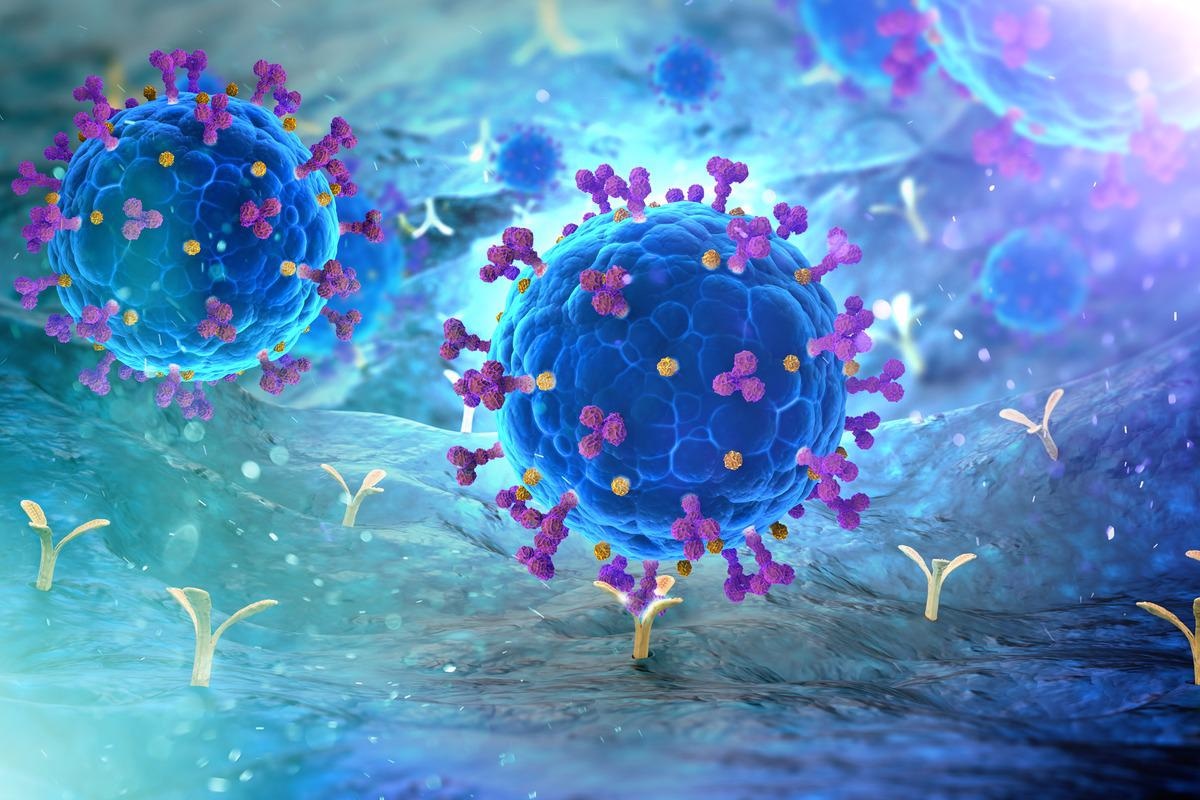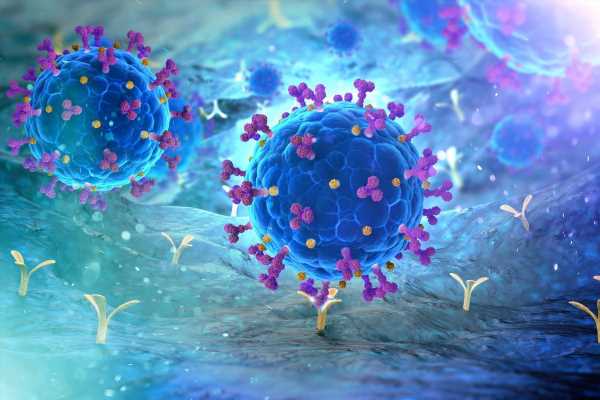In a recent study published in the journal Scientific Reports, a team of researchers investigated the binding behavior of spike (S) protein and receptor-binding domain (RBD) of severe acute respiratory syndrome coronavirus 2 (SARS-CoV-2) under different environmental conditions.
 Study: Binding behavior of spike protein and receptor binding domain of the SARS-CoV-2 virus at different environmental conditions. Image Credit: Andrii Vodolazhskyi/Shutterstock
Study: Binding behavior of spike protein and receptor binding domain of the SARS-CoV-2 virus at different environmental conditions. Image Credit: Andrii Vodolazhskyi/Shutterstock
Structural analysis and molecular dynamics simulations have previously revealed that the hydrophobic residues at the angiotensin-converting enzyme 2 (ACE2) surfaces contribute significantly to the strength of its binding to SARS-CoV-2 S protein.
Food processing facilities, such as meat processing plants, typically maintain high humidity and temperatures below 12°C. Together with a high concentration of fat particles in the air, such air properties could enhance the attachment of SARS-CoV-2 to surfaces in these facilities. A study conducted in Iowa described that a single SARS-CoV-2-infected individual working at a meatpacking plant led to unrestrained spread within the meat facility and consequently in 13 surrounding cities.
Several studies have investigated the clusters of SARS-CoV-2 infections among the workers in the unique environment of meat processing facilities from different aspects, producing evidence that these facilities are far more conducive to SARS-CoV-2 replication and transmission due to their environmental conditions. Furthermore, while the low temperature is known to promote aerosol transmission of SARS-CoV-2, the effect of intermediate temperatures on the attachment of SARS-CoV-2 to surfaces remains largely unknown.
About the study
In the present study, the researchers studied the effect of temperature, fatty acids, ions, and protein concentration on the binding behavior of the S protein and RBD of SARS-CoV-2. They presented the binding curves fitted to the local model using the BLItz Pro 1.3 Software (ForteBio).
Further, they performed bio-layer interferometry (BLI) for the kinetic analysis of each of the prepared samples of S protein and RBD of SARS-CoV-2 mixed with different substances or exposed to different temperatures, using the personal assay BLItz system with aminopropylsilane (APS) biosensors.
The determined rates of association and dissociation of S protein and RBD were validated using molecular dynamics simulation, and these calculations were displayed in the BLItz Pro 1.3 Software from ForteBio.
The researchers analyzed each sample by the BLI at least twice to ensure the reproducibility of the results. Also, they used APS biosensor and phosphate-buffered saline (PBS) in the same manner before each experiment for serving as the reference correction for each assay.
Study findings
The results showed that three environmental conditions were conducive to the attachment of the purified S protein and its receptor-binding domain to hydrophobic surfaces – high ionic concentration, presence of hydrophobic fatty acids, and low temperature. Exposing the S protein to a wide range of temperatures from 0 °C to 25 °C within one hour resulted in S protein detachment, suggesting that freezing induced structural changes in the S protein that affected its binding kinetics, and S recovered only at a higher temperature later.
Experimenting under such conditions helped researchers simulate the sudden temperature drop commonly seen in meat processing plants when workers move from breakrooms to chiller or fabrication rooms. In these facilities, breakrooms have warmer temperatures of 25 °C, and the chiller or fabrication rooms usually have temperatures below 12 °C due to the presence of dry ice containers to keep the products safe during processing. As SARS-CoV-2 disseminates via aerosols, there is a possibility that it gets transported with the airflow through the openings between these locations, exposing more workers to SARS-CoV-2 infection.
Under all the studied environmental conditions, RBD exhibited lower dissociation capabilities than the full-length S trimer protein, indicating it had a stronger attachment to hydrophobic surfaces alone than while residing within the S protein. In addition, as revealed by MD simulation, the presence of fatty acid molecules significantly increased the hydrophobic surface area of RBD, altering its binding ability.
Overall, environmental conditions, including low temperature, high humidity, and presence of fatty acids, of meat processing plants enhanced the binding of the SARS-CoV-2 to hydrophobic surfaces, making it impossible to remove the virus through typical sanitation procedures such as ventilation and hosing. Moreover, the enhanced attachment of the virus to equipment surfaces and workers’ clothes imposed higher risks of contact transmission.
Another condition that further contributed to higher SARS-CoV-2 transmission inside meat processing plants was the presence of fat particles in the air. These fat aerosols strongly adhered to SARS-CoV-2 S protein got entrained in the ventilated airflow and traveled for a longer distance, increasing the chances of airborne SARS-CoV-2 transmission.
Conclusions
Based on the study findings, the authors recommended several modifications to change the environmental conditions of food processing facilities and help protect public health and safety.
The researchers recommended changing the sanitation and cleaning procedures in meat processing plants, such as hosing the floors and workbenches with warm water, heating all surfaces temporarily before cleaning, and lowering humidity by enhancing ventilation. All these measures could increase the chances of SARS-CoV-2 elimination from these facilities and the efficiency of sanitization procedures, thereby providing a safer environment to protect workers.
Future research should examine the binding kinetics of the SARS-CoV-2 S proteins under higher S protein concentrations and intermediate temperatures between 0 °C and 37 °C.
-
Zhang, M. et al. (2022) "Binding behavior of spike protein and receptor binding domain of the SARS-CoV-2 virus at different environmental conditions", Scientific Reports, 12(1). doi: 10.1038/s41598-021-04673-y. https://www.nature.com/articles/s41598-021-04673-y
Posted in: Medical Science News | Medical Research News | Disease/Infection News
Tags: ACE2, Angiotensin, Angiotensin-Converting Enzyme 2, Assay, Biosensor, Coronavirus, Coronavirus Disease COVID-19, dry ice, Enzyme, Fatty Acids, Food, Meat, Protein, Public Health, Receptor, Research, Respiratory, Sanitization, SARS, SARS-CoV-2, Severe Acute Respiratory, Severe Acute Respiratory Syndrome, Spike Protein, Syndrome, Virus

Written by
Neha Mathur
Neha Mathur has a Master’s degree in Biotechnology and extensive experience in digital marketing. She is passionate about reading and music. When she is not working, Neha likes to cook and travel.
Source: Read Full Article
